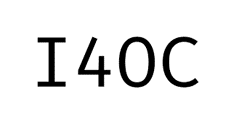Aplicación de un programa de madurez vocacional en estudiantes de secundaria víctimas de marginación social
DOI:
https://doi.org/10.18050/psiquemag.v9i2.2739Palabras clave:
Programa de madurez vocacional, Programa de orientación vocacionalResumen
El presente trabajo de investigación, “Programa “Decido mi futuro” en la madurez vocacional, en estudiantes víctimas de marginación social del 4to grado del ciclo avanzado del CEBA Herman Busse de la Guerra, 2095, 2018.”, buscó conocer los efectos que produce la intervención de un plan de orientación vocacional, conformado por talleres fundamentados en principios psicopedagógicos, y cuya aplicación didáctica está en función de los objetivos y principios de la propuesta. La investigación fue de tipo aplicada, de diseño pre experimental. El grupo de estudio estuvo conformado por 84 estudiantes, distribuidos en 42 en el grupo experimental y 42 en el grupo control. Se aplicó el pretest utilizando el cuestionario de madurez emocional donde se obtuvieron puntajes en dimensión madurez emocional (t=1.21, p=0.23), en la dimensión planificación (t = 0.62, p = 0.54), la dimensión exploración (t = 1.11, p = 0.27), la dimensión información (t = 1.11, p = 0.27) y por último en la dimensión toma de decisiones (U = 844, p = 0.73) evidenciándose que no existen diferencias estadísticamente significativas en el pretest en el grupo experimental y grupo control. Los resultados del postest nos muestran que después de haber aplicado el programa vocacional los grupos control y experimental si se evidenciaron diferencias significativas en sus cinco dimensiones: En madurez emocional (t = 9.28, p = 0.00), en la dimensión planificación (t = 0.62, p = .001), en la dimensión exploración (t = 4.865, p = 0.000), en la dimensión información (U = 314.5, p = 0.000), y en la dimensión toma de decisiones (U = 71.00, p = 0.000). El estudio comprobó la eficacia del programa “Decido mi futuro”.
Descargas
Referencias
Anaya, D. y Repetto, E. (1992). Estudio de la madurez vocacional de los estudiantes españoles de educación secundaria mediante el Career Development Inventory – School Form. UNED.
Bisquerra, R. (1998). Modelos de orientación e intervención psicopedagógica. Praxis.
Campbell, D y Stanley, J. (1973). Diseños experimentales y cuasi experimentales en la investigación social. Ed. Amorrortu.
Frisancho, A. (2006). La orientación vocacional en los colegios públicos y privados de Lima: situación actual y propuesta de un programa de acción para la secundaria pública. Revista de investigación en psicología, 9(1), 23-35. https://doi.org/10.15381/rinvp.v9i1.4027
Hernández, R., Fernández, C. y Baptista, P. (2010). Metodología de la investigación (5ª ed). Mc Graw Hill.
Lucas, S. y Carbonero, M. (1999). Desarrollo del autoconocimiento y autoeficacia a través de un programa de orientación profesional en educación secundaria. Universidad de Valladolid.
MINEDU. (2011). Tutoría y Orientación Educativa. Orientación vocacional. Punto y Grafía.
Sánchez, H. y Reyes, C. (2006). Metodología y diseños en la investigación científica. Visión Universitaria.
Super, D y Thompson, A. (1981). Career Development Inventory. Columbia University.
Valles, A. y Álvarez, J. (1998). Orienta Plus. Programa de orientación vocacional. Escuela Española.
Descargas
Publicado
Número
Sección
Licencia
Derechos de autor 2020 PsiqueMag

Esta obra está bajo una licencia internacional Creative Commons Atribución-NoComercial-SinDerivadas 4.0.
Usted es libre de:
- Compartir — copiar y redistribuir el material en cualquier medio o formato
- El licenciador no puede revocar estas libertades mientras cumpla con los términos de la licencia.
Bajo las condiciones siguientes:
-
Reconocimiento — Debe reconocer adecuadamente la autoría, proporcionar un enlace a la licencia e indicar si se han realizado cambios<. Puede hacerlo de cualquier manera razonable, pero no de una manera que sugiera que tiene el apoyo del licenciador o lo recibe por el uso que hace.













